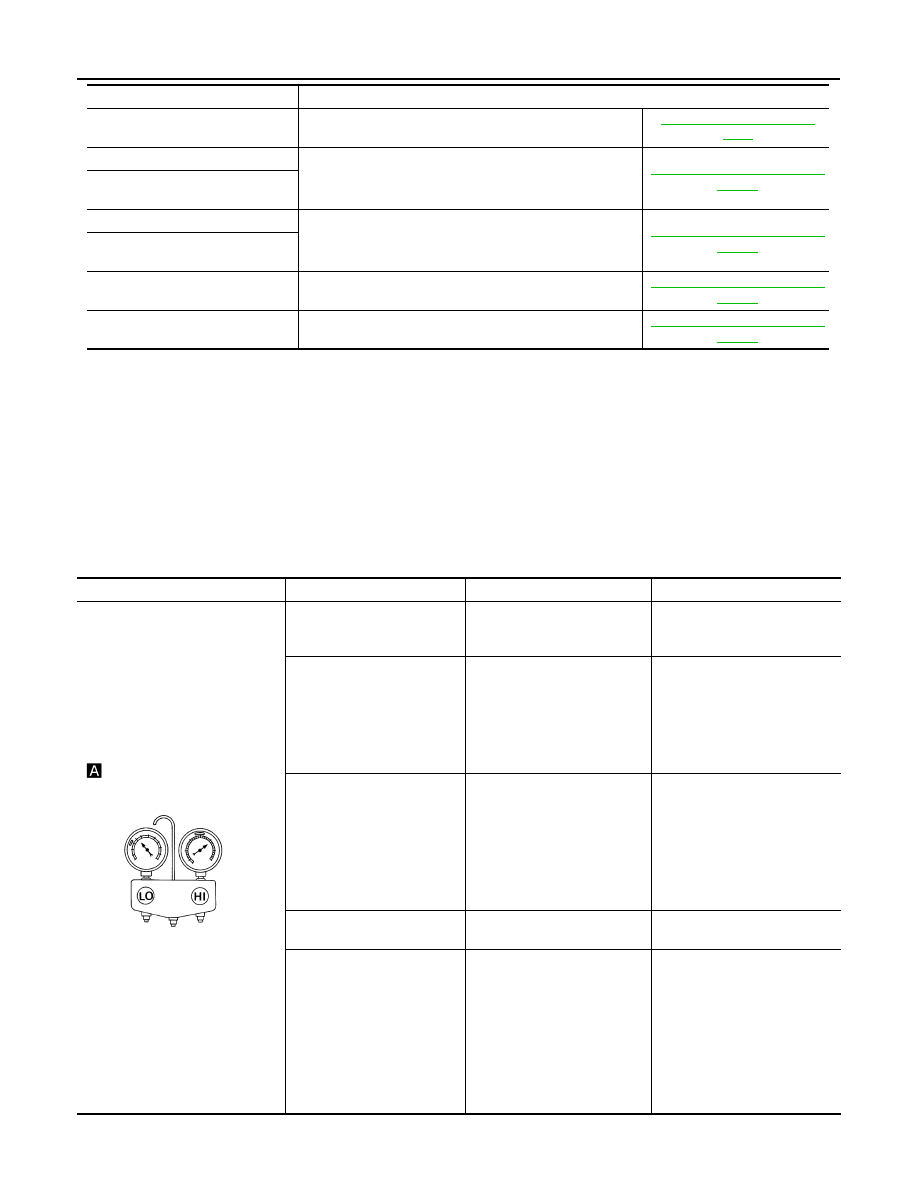Nissan Maxima. Manual - part 699

HA-22
< SYMPTOM DIAGNOSIS >
REFRIGERATION SYSTEM SYMPTOMS
WITH MONOCHROME DISPLAY
WITH MONOCHROME DISPLAY : Trouble Diagnoses for Abnormal Pressure
INFOID:0000000009465930
Whenever system
′s high and/or low side pressure is abnormal, diagnose using a manifold gauge. The marker
above the gauge scale in the following tables indicates the standard (usual) pressure range. Since the stan-
dard (usual) pressure, however, differs from vehicle to vehicle, refer to above table (Ambient air temperature-
to-operating pressure table).
Both High- and Low-pressure Sides are Too High
High-pressure Side is Too High and Low-pressure Side is Too Low
Magnet clutch does not engage.
Go to Trouble Diagnosis Procedure for Magnet Clutch.
Insufficient cooling
Go to Trouble Diagnosis Procedure for Insufficient Cooling.
No cool air comes out.
(Airflow volume is normal.)
Insufficient heating
Go to Trouble Diagnosis Procedure for Insufficient Heating.
No warm air comes out.
(Airflow volume is normal.)
Noise
Go to Trouble Diagnosis Procedure for Noise.
Memory function does not operate.
Go to Trouble Diagnosis Procedure for Memory Function.
Symptom
Reference
Gauge indication
Refrigerant cycle
Probable cause
Corrective action
Both high- and low-pressure sides
are too high.
Pressure is reduced soon af-
ter water is splashed on con-
denser.
Excessive refrigerant charge in
refrigeration cycle
Reduce refrigerant until speci-
fied pressure is obtained.
Air suction by cooling fan is in-
sufficient.
Insufficient condenser cooling
performance
↓
1.
Condenser fins are
clogged.
2.
Improper fan rotation of
cooling fan
• Clean condenser.
• Check and repair cooling fan
if necessary.
• Low-pressure pipe is not
cold.
• When A/C compressor is
stopped high-pressure val-
ue quickly drops by approx-
imately 196 kPa (2 kg/cm
2
,
28 psi). It then decreases
gradually thereafter.
Poor heat exchange in con-
denser
(After A/C compressor opera-
tion stops, high-pressure de-
creases too slowly.)
↓
Air in refrigeration cycle
Evacuate and recharge system.
Engine tends to overheat.
Engine cooling systems mal-
function.
Check and repair engine cool-
ing system.
• An area of the low-pressure
pipe is colder than areas
near the evaporator outlet.
• Plates are sometimes cov-
ered with frost.
• Excessive liquid refrigerant
on low-pressure side
• Excessive refrigerant dis-
charge flow
• Expansion valve is open a lit-
tle compared with the speci-
fication.
↓
Improper expansion valve ad-
justment
Replace expansion valve.
AC359A